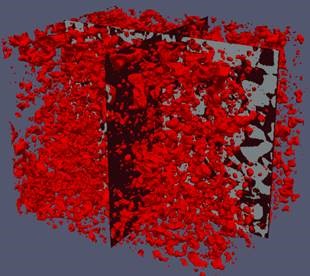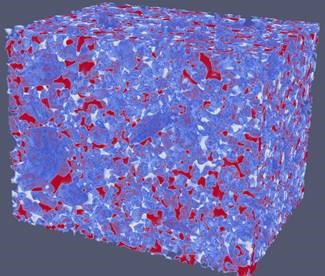Title : The LBPM software package for simulating multiphase flow on digital images of porous rocks
Speaker: Dr. Thomas Ramstad
Affiliation: Principal researcher at Equinor
When: 30 September 2020 from 14 to 15:00
Where:
Join Zoom Meeting
https://NTNU.zoom.us/j/96373107232?pwd=ekZFKzZ2am9UYmpxMEx6Y2JUWEZrdz09
Meeting ID: 963 7310 7232
Passcode: 549412
Join by SIP
Join by H.323
162.255.37.11 (US West)
162.255.36.11 (US East)
115.114.131.7 (India Mumbai)
115.114.115.7 (India Hyderabad)
213.19.144.110 (Amsterdam Netherlands)
213.244.140.110 (Germany)
103.122.166.55 (Australia)
149.137.40.110 (Singapore)
64.211.144.160 (Brazil)
69.174.57.160 (Canada)
207.226.132.110 (Japan)
Meeting ID: 963 7310 7232
Passcode: 549412
Join by Skype for Business
https://NTNU.zoom.us/skype/96373107232
Abstract:
Multiphase flow in porous media is strongly influenced by the pore-scale in-situ arrangement of fluids. How fluids are distributed and transported are dependent on the pore structure in addition to wettability and fluid and flow properties. It is essential to capture these pore scale effects to obtain good constitutive relations for characterization of macroscopic flow behavior on the reservoir scale.
Direct pore scale simulations of two-fluid flow on digital rock images provide a promising tool to understand the flow and transport in geologic reservoirs [1]. We will here present the open source LBPM (Lattice Boltzmann Methods for Porous Media) software package that utilizes an efficient two-phase lattice Boltzmann method. The simulator operates on pore scale models of porous media and includes a wide range of input related to fluid properties, boundary conditions and wettability.
Protocols are described to simulate unsteady displacement, steady-state and centrifuge experiments. These frameworks can be used to infer relative permeability and capillary curves. Morphological tools are applied to assess image resolution, establish initial conditions, and instantiate surface wetting maps based on the distribution of fluids. Internal analysis tools are described that measure essential aspects of two-fluid flow, including fluid connectivity and surface measures, which are used to track transient aspects of the flow behavior as they occur during simulation.
We show that the described methods can be applied to recover expected trends in SCAL data due to the surface wetting properties. The results are based on flow simulations on digital images of a Bentheimer sandstone obtained from X-ray computed tomography with high resolution (micro-CT) [2].
We have also used the LBPM to present fundamental analysis of evolution of geometric states for fluids in porous media induced by pore-scale displacement events. By constructing a universal geometric state function that predicts the possible geometric states based on a non-dimensional relationship with two degrees of freedom, we can better describe the history-dependence of fluid distributions also known as hysteresis [3].
LBPM is freely available under the Open Porous Media (OPM) project that comprises several open source tools for simulating and upscaling flow in porous media on several scale ranging from pore scale to reservoir scale. The current release of LBPM under OPM is a result of collaboration between Virginia Tech and Equinor Research Center.
[1] Ramstad, T., Berg, C. F., & Thompson, K. “Pore-scale simulations of single-and two-phase flow in porous media: approaches and applications”. Transp Porous Med, 130(1), 77-104 (2019).
[2] McClure, J. E., Li, Z., Berrill, M., & Ramstad, T. “The LBPM software package for simulating multiphase flow on digital images of porous rocks”. arXiv preprint arXiv:2007.12266 (2020).
[3] McClure, J. E., Ramstad, T., Li, Z. et al. “Modeling Geometric State for Fluids in Porous Media: Evolution of the Euler Characteristic”. Transp Porous Med, 133, 229–250 (2020).


